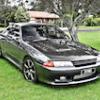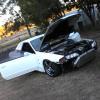Driver Aids
Announcements
-
Similar Content
-
Latest Posts
-
Just to follow up on this. Will the speedo work with this? Like to have plugged speed sensor on this trans and still using one on diff from N/A (open) diff?
-
The opposite experiment is equally viable. 10L of petrol in the tank + 2L of metho.
-
I think you'll find that all fuel in some countries has 10% ethanol in it.
-
I'm with both M & D here. There's little harm, unless you're prone to getting annoyed by over-enthusiastic displays of wild optimism and/or stupidity**. And there is potential benefit from basking in the warm glow of schadenfreude, if you get something from that. **The bookface generation seem to think that if they can see something on the internet, then it must have been posted just before, because there is clearly absolutely no history when everything is served up on some sort of dash, fresh for your algorithm fed delectation.
-





Recommended Posts
Create an account or sign in to comment
You need to be a member in order to leave a comment
Create an account
Sign up for a new account in our community. It's easy!
Register a new accountSign in
Already have an account? Sign in here.
Sign In Now